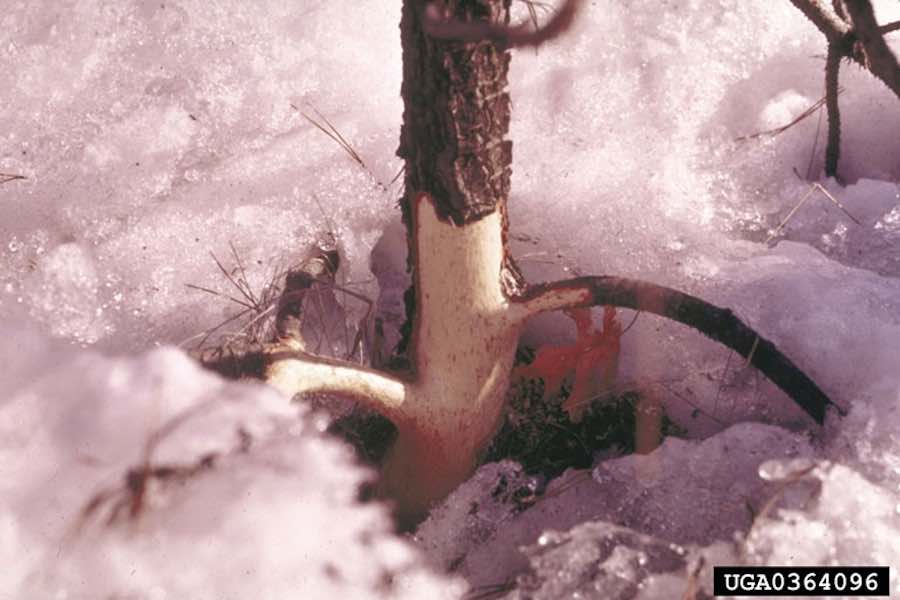If you’re in Idaho, you’ve probably come across the troublesome meadow vole. These small, chunky rodents can cause significant damage to lawns and landscapes. Measuring 4½ to 5½ inches long including their tail, voles are ground-dwelling creatures that are active year-round. However, their damage may go unnoticed until the snow melts in the spring.
Meadow voles have a diverse diet, feeding on roots, stems, grass, seeds, and underground reproductive structures like bulbs and tubers. Their destructive behavior extends to trees as well, where they girdle or remove the bark from the trunk or stem near the base. In lawns, voles create shallow tunnels and runways, leaving behind gnawed stems, bark, and roots.
Vole populations go through cycles, with minor population peaks occurring every four to six years and more significant outbreaks every 10 to 12 years. Unfortunately, these cycles are unpredictable and challenging to disrupt with disease alone unless the infected population is extremely dense.
A vole’s lifespan ranges from two to 16 months. They reproduce year-round and can have one to five litters a year, usually consisting of three to six young. The gestation period lasts 21 days, and females become sexually mature at around 35 to 40 days.
What can you do if you have a vole problem?

The first step is to regularly monitor your property for signs of vole damage. To discourage their presence, maintain your lawn by mowing it consistently and clearing away weeds and debris from affected areas, including windbreaks.
To protect trees, shrubs, and flowerbeds from voles, use 3/8-inch netted wire to create barriers. Install the wire six inches below the soil and six inches above the ground. Alternatively, consider using aluminum flashing or other materials that can serve as effective entry barriers.
Wooden traps can also be useful in reducing vole damage. Place the traps flush with the ground and at right angles to surface runways. It’s crucial to stake them down to prevent predators from removing them. Set the traps with enticing baits like peanut butter, oatmeal, or apple slices. Check the traps daily and bury any dead voles. Keep traps out of reach of children and small pets.
If you opt for chemical solutions, there are two hand-baiting options available. However, caution must be exercised as these chemicals are toxic to children, pets, and non-target animals. One approach is to use bait stations, enclosed feeding devices placed in runways or near burrows to attract voles as they navigate their usual routes. Fresh bait and pre-baiting with non-toxic alternatives can enhance the effectiveness of this method. Always read and follow label instructions when using chemicals.

One of the options is zinc phosphide, a restricted-use chemical that can only be purchased and used by certified applicators. This fast-acting substance is suitable for application between early spring and late fall. Ensure it is placed within a bait station, as moisture can render it ineffective. Avoid applying it when moisture is expected and keep it dry.
Alternatively, anticoagulant chemical baits are available. These baits combine grain or other food sources with the active ingredient to attract voles. They are usually in pellet or block form. Multiple feedings are typically necessary to achieve lethal results. Place these baits underground in entry holes or bait stations.
=htmlentities(get_the_title())?>%0D%0A%0D%0A=get_permalink()?>%0D%0A%0D%0A=htmlentities(‘For more stories like this one, be sure to visit https://www.eastidahonews.com/ for all of the latest news, community events and more.’)?>&subject=Check%20out%20this%20story%20from%20EastIdahoNews” class=”fa-stack jDialog”>


